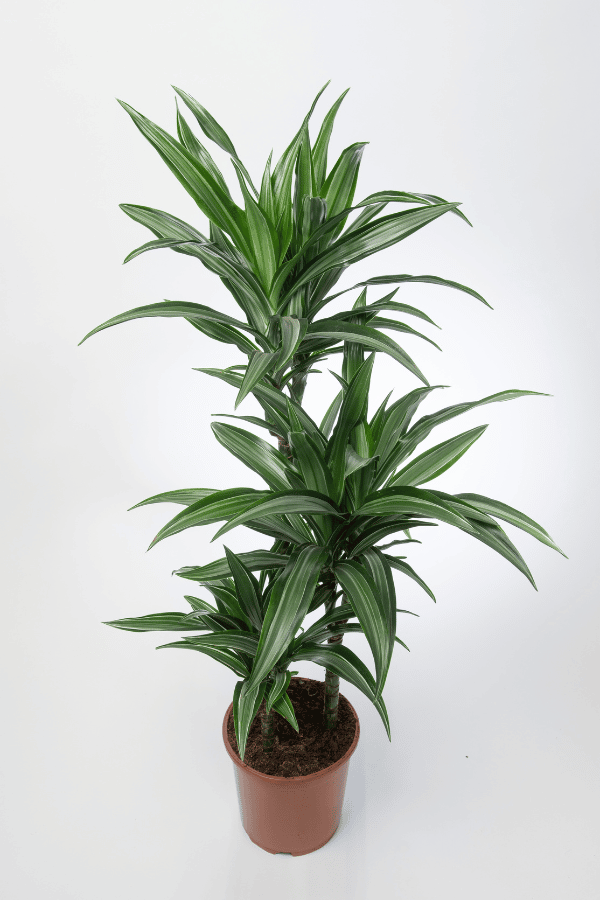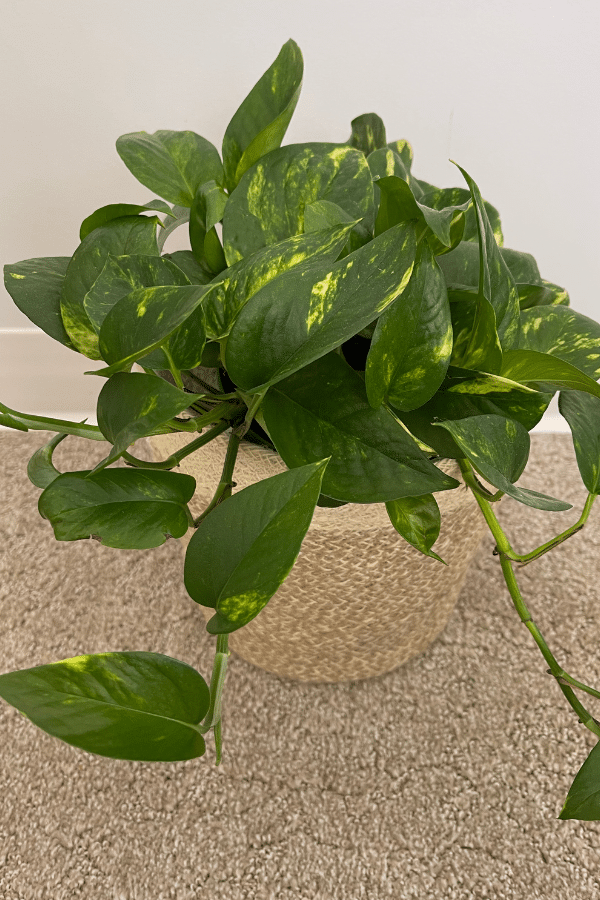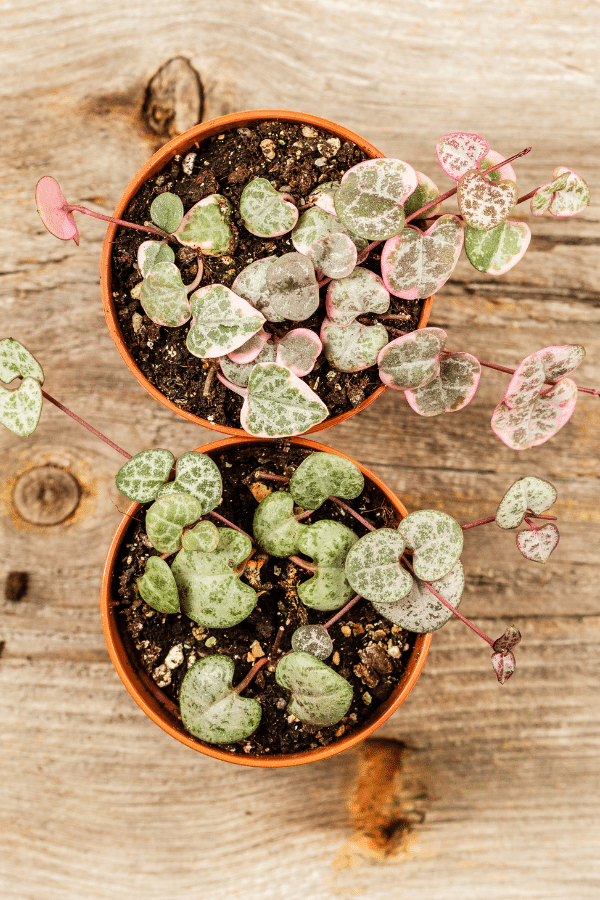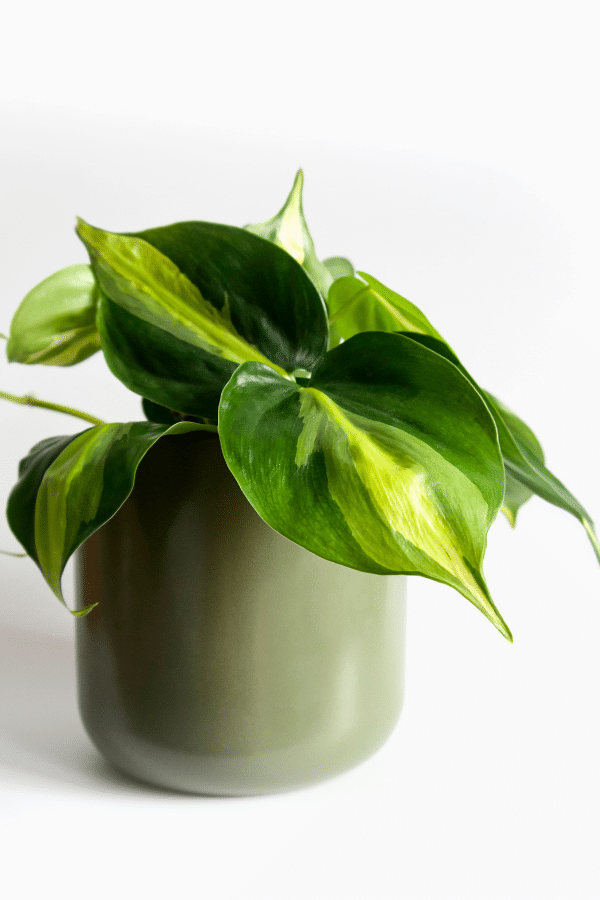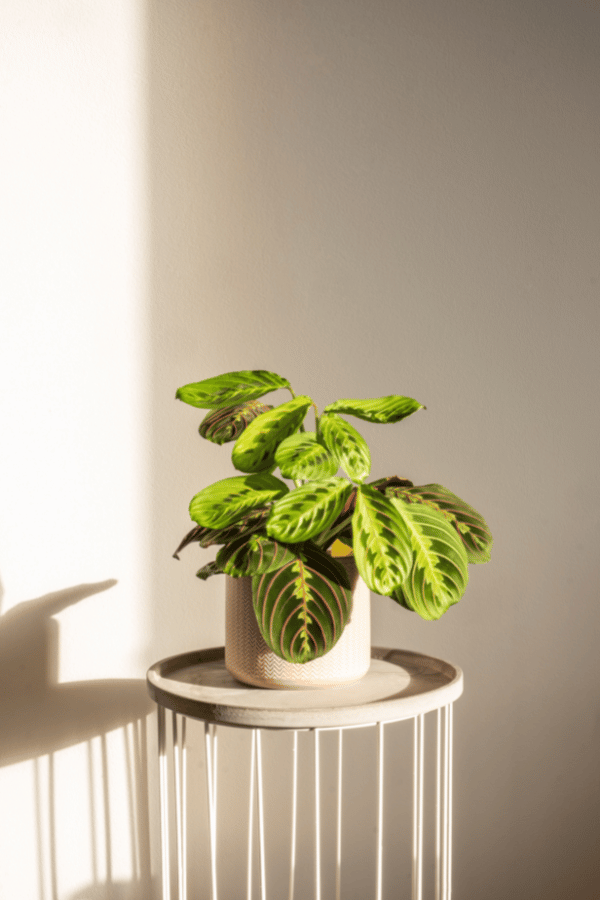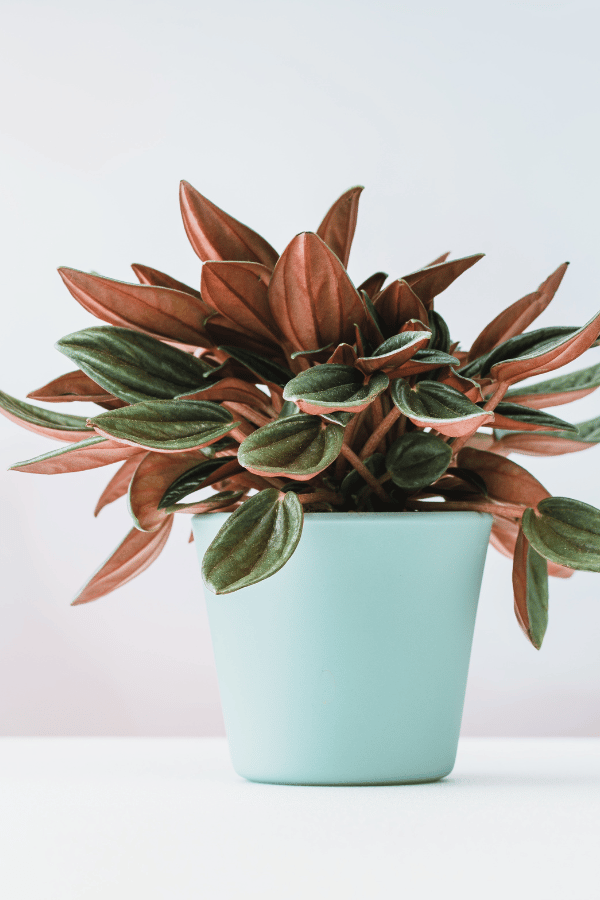Golden Pothos
Golden Pothos care is one of the easiest plants to grow and care for. If you are looking for your first plant, a new plant, or another Pothos, then an Epipremnum Aureum plant may be for you.
Scientific Name: Epipremnum Aureum
Common Name: Golden Pothos, Devil’s Ivy
To give this Pothos plant the best care, it requires well-draining soil, allow the soil to dry out completely before watering, provide it with bright indirect sunlight, temperatures ranging from 65-75F, and average household humidity levels.
Quick Care Overview
| Common Name | Golden Pothos, Devil’s Ivy |
| Scientific Name | Epipremnum Aureum |
| Family | Araceae |
| Origin | Solomon Islands |
| Growth Rate | Fast |
| Identification | Light green leaves with yellow variegation, trailing |
| Height | Up to 40 feet tall |
| Soil | Well-draining soil |
| Water | Let dry out completely before watering |
| Temperature | 65-75F |
| Sunlight | Bright indirect sunlight |
| Toxic to Cats & Dogs | Yes |
| Toxic to Humans | Yes |
| Pests | Mealybugs, fungus gnats |
| Diseases | Root rot |
Below we will dive deep into this Golden Pothos care guide.
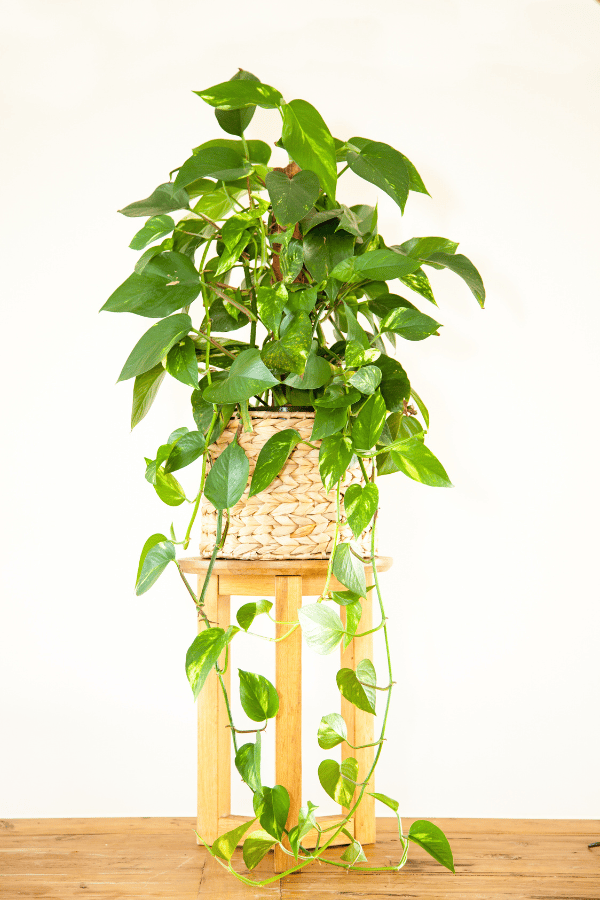
Golden Pothos History
Solomon Islands native Epipremnum Aureum, otherwise known as Pothos or Devil’s Ivy, is a gorgeous indoor plant that comes highly recommended for beginners. Golden Pothos are golden yellow variegated plants that are very common to find. Super easy to keep alive and coming in gorgeous, variegated patterns, this climbing plant will make a lovely addition to the home.
Golden Pothos Identification
Golden Pothos is one of the most popular types of Pothos found globally. Presenting with light, lime-colored leaves that have yellow variegation, the patterns on its foliage appear to be almost painted on. Unlike many other plants, the Golden Pothos will maintain its variegation even in low light conditions.
Golden Pothos Growth Facts
This fast-growing plant may grow up to 1.5 feet a month during the growing season. This beautiful vining plant looks great when grown on mantles, hanging baskets, or up trellises (if given support).
How Big Does a Golden Pothos Get?
Golden Pothos may grow up to 40 feet long and 6 feet wide if not kept back.
Golden Pothos Care
As this plant does not cling naturally to supports, you may choose to secure it on hooks along the house or to a trellis, or you may allow it to trail along mantles, bookshelves, and more. Quick-growing vines may tangle easily, so take time to support your Pothos growth by aiding it to go where you want it to grow. This plant can tolerate low light and fluorescent lighting, making this plant perfect for lower-light rooms.
Golden Pothos Soil
Pothos plants are very tolerant of various growing mediums as long as they are well-draining. A quality commercial potting soil will treat this plant nicely.
Golden Pothos Fertilizer
Golden Pothos are not heavy feeders and do not require much fertilization. However, to boost this plant’s growth, you may feed it monthly with a balanced fertilizer indicated for houseplants to increase nutrition. Do not feed in fall or winter and be sure to follow all label instructions.
Golden Pothos Watering
Epipremnum Aureum likes to dry out completely between waterings, making them extremely easy to care for. However, this plant may suffer easily from overwatering. When its leaves start to droop, you should rewater your Pothos. If you see the edges of your plant drying up and turning brown, you have waited too long to water.
Golden Pothos Light Requirements
While this plant is very tolerant of low light or fluorescent lighting, too low of light may make this plant’s variegation begin to fade. However, too much sun will make the foliage of this plant turn pale. Therefore, indirect sunlight is best for the Golden Pothos.
Golden Pothos Temperature & Humidity
Golden Pothos, being a tropical plant, like to remain above 50 degrees Fahrenheit at all times, but being kept between 65-75 degrees, Fahrenheit is best. Additionally, Pothos plants like to stay in high humidity and will appreciate added humidity from a humidifier or pebble tray. However, this plant will tolerate average indoor conditions, so adding humidity is unnecessary.
Repotting Golden Pothos
You should repot your Golden Pothos whenever you see roots coming out of the drainage holes and drooping leaves (despite frequent watering). Select a pot that is the next size up from your current container or one that is 1-2 inches larger.
Golden Pothos Maintenance & Pruning
As the vines of the Golden Pothos will grow quite long if not kept back, pruning will likely become necessary to maintain your plant. Individual vines can be cut back up to about two inches or so above the soil line. When taking a cut, ensure that you cut about ¼” above each leaf. After pruning, you may easily propagate your cuttings.
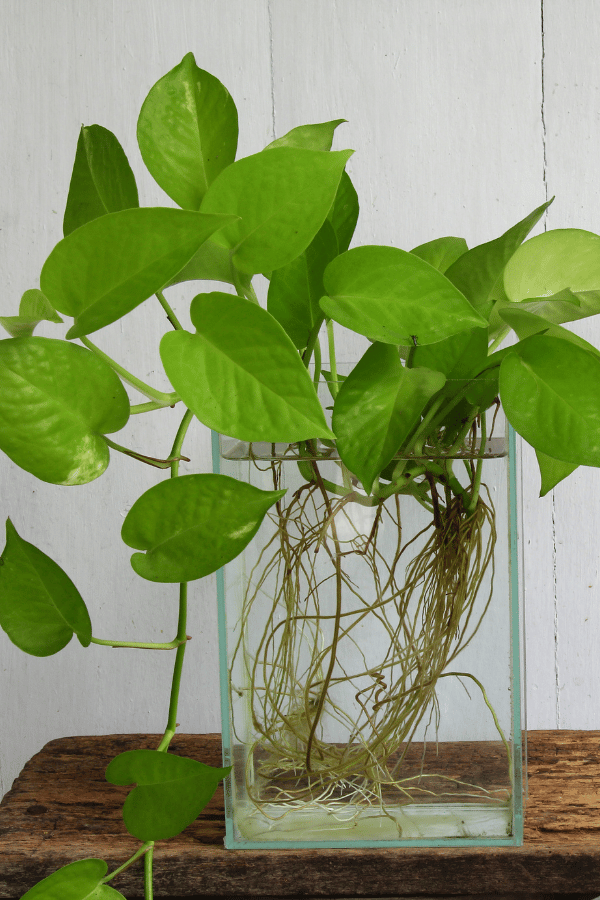
Golden Pothos Propagation
Golden Pothos may be easily propagated through stem cuttings. To take a stem cutting, take a piece of stem with at least three leaves and cut at an angle below the lowest leaf using sharp, clean shears. Next, place the stem in water, ensuring the leaves are not submerged (you may remove the lowest leaf). After the cutting(s) have developed roots that are a few inches long within a few weeks, you should place the cuttings into the soil, water them thoroughly, and place them in indirect light.
Golden Pothos Toxicity
Toxicity to Humans
The Golden Pothos is considered toxic to humans due to its calcium oxalate content. Do not consume this plant.
Toxicity to Cats & Dogs
The Golden Pothos is considered toxic to pets and should not be ingested. Ingestion may lead to oral irritation, burning, drooling, vomiting, and difficulty swallowing.
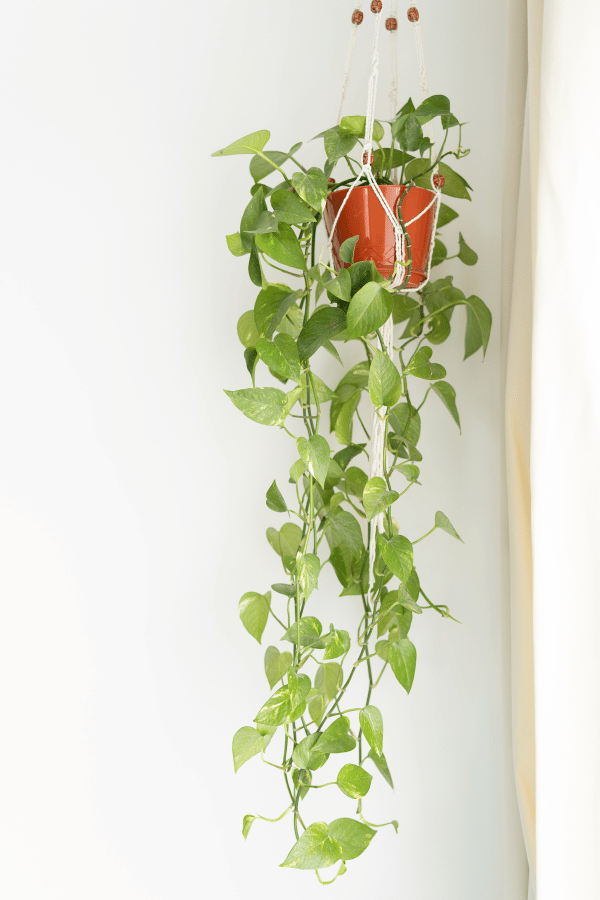
Golden Pothos Problems
Golden Pothos Leaves Turning Yellow
Leaves of the Golden Pothos may turn yellow due overwatering, lack of light, or nutritional imbalances.
Golden Pothos Leaves Turning Brown
The foliage of your Epipremnum Aureum may turn brown due to several reasons. Leaves may turn brown due to overwatering, underwatering, too much fertilizer, or too much light.
Golden Pothos Diseases
Golden Pothos may become susceptible to root rot, leaf spot, and other issues largely related to overwatering.
Golden Pothos Pests
Pothos are generally considered pest-resistant. However, they may occasionally become infested with indoor houseplant pests such as mealybugs. If an infestation is spotted, isolate your plant, and treat it with a pesticide such as insecticidal soap. Alternatively, dab the insects with a cotton swab dipped in alcohol.

